Are you ready to explore the world through sound? With each new country, culture, and region comes a unique set of musical styles that are sure to melt your heart and expand your horizon. From the intense rhythms in Spain to catchy reggaeton in Puerto Rico, everyone can find something they enjoy if they take the time to search for it. In this blog post, we’ll be taking a journey around the globe, looking at some of the most interesting music genres from each geography. Come with us as we explore how different cultures express themselves musically!
Music and its effects
Music is an incredibly powerful form of expression that has the ability to connect people from all walks of life. Whether it’s the beat of a drum or the melody of a flute, music has the power to move us emotionally and spiritually.
Music from around the world broadens our perspective and opens us up to new experiences. When we listen to global music from different cultures and traditions, we are exposed to different rhythms, scales, and instruments that we may have never heard before.
Music from around the world allows us to learn about different cultures and traditions. Listening to music can provide insight into the way of life and worldview of a particular group of people, as the music is often intertwined with their history and traditions.
Music broadens our perspective, teaches us about different cultures and traditions, and can be a fun and exciting adventure.
Now let’s dive into the world of music from around the world!
Reggae from Jamaica
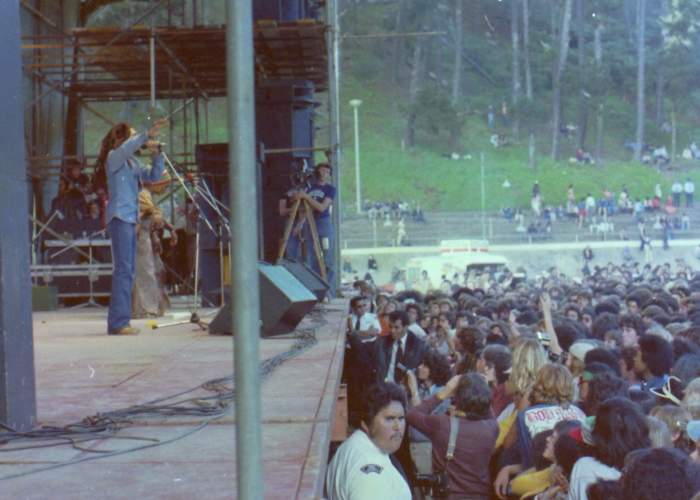
Reggae music is a genre that originated in Jamaica in the late 1960s. Its distinctive rhythms and heavy use of bass characterize reggaeton, which is a fusion of various musical styles such as ska, rocksteady, and R&B. Reggae has become a global phenomenon, with fans all over the world appreciating the music’s uplifting and spiritual messages.
Famous Reggae Musicians
One of the most famous reggae musicians of all time is Bob Marley. His music was a mix of reggae, ska, and rocksteady, and his lyrics often reflected his Rastafarian beliefs. Marley’s music became synonymous with reggae, and he remains a cultural icon to this day.
Characteristics of Reggae
Reggae music is known for its laid-back, chilled-out vibe, and its uplifting and positive lyrics. Many reggae songs focus on themes of love, peace, and unity. Spirituality and Rastafarianism are often associated with Raggae. The rhythms of reggae are instantly recognizable, with the bass line typically playing a prominent role in the music.
Reggae music has influenced countless other genres of music, including hip-hop, punk rock, and electronic music. The music’s laid-back vibe and positive messages have resonated with people all over the world. It continues to be a popular genre to this day!
Flamenco from Spain
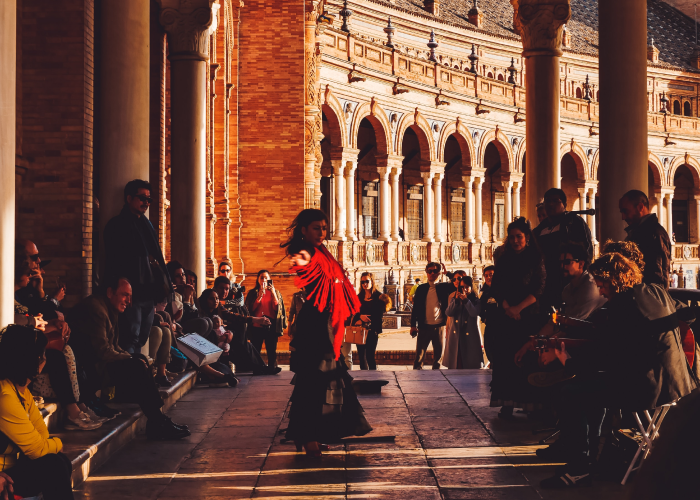
Flamenco music is a traditional form of music and dance that originates from Andalusia, a region in southern Spain. Its passionate and intense rhythms, intricate guitar playing, and powerful vocals are what make it known.
Origins of Flamenco
The roots of flamenco music can be traced back to the 15th century, when Andalusia was home to a diverse mix of cultures, including Jews, Moors, and Romani. These different groups brought with them their own musical traditions. Over time, they blended together to create the unique sound of flamenco.
The Characteristics of Flamenco
One of the defining characteristics of flamenco music is the use of the guitar. The flamenco guitar is a distinct type of guitar. The musician uses the guitar to create the intricate melodies and rhythms that are so central to the music. The player often uses their fingers to create a variety of different sounds and rhythms while playing the guitar in a percussive style.
Another key component of flamenco music is the vocals. Flamenco singers are known for their powerful voices and emotional performances. They often use a technique called “cante jondo” (deep singing) to convey the intense emotions and passions of the music. The lyrics of flamenco songs often deal with themes of love, loss, and the struggles of everyday life.
In addition to the guitar and vocals, flamenco music also incorporates a variety of other instruments, including castanets, tambourines, and handclaps. Musicians use these instruments to create complex rhythms and add overall energy and intensity to the music.
Flamenco Today
Today, flamenco music is enjoyed by people all over the world. It has become a popular style of music in many different countries. Despite its popularity, however, flamenco music remains deeply connected to its Andalusian roots, and continues to be an important part of the cultural heritage of southern Spain.
Hip Hop from USA
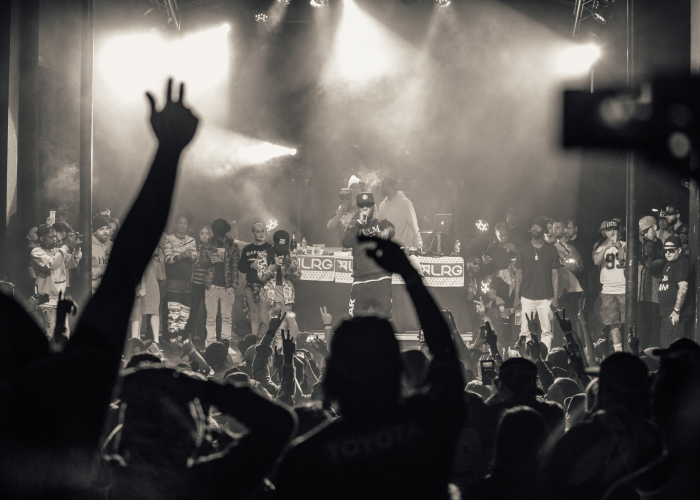
Hip hop is a musical genre that emerged from the streets of the Bronx, New York in the late 1970s. Its unique blend of music, art, and culture has gained widespread popularity globally.
The Characteristics of Hip Hop
Hip hop music is characterized by its rhythmic beats, catchy melodies, and spoken word lyrics, often reflecting the social and cultural experiences of the artists. One of the most distinctive features of hip hop is the use of sampling. Sampling involves taking a small part of a pre-existing song and using it as the foundation for a new composition. This technique has been used to great effect in hip hop music. It allows artists to create new sounds and styles by mixing together different genres and cultures.
The Impact of Hip Hop
Hip hop has been used as a platform to discuss a wide range of social and political issues, including racism, poverty, and police brutality. Many hip hop artists have used their music to raise awareness about these issues and to inspire social change.
Critics have also criticized hip hop for its explicit lyrics and portrayal of violence and drugs. However, many argue that hip hop is simply reflecting the realities of life in disadvantaged communities. More than that, it provides a platform for artists to express themselves and their experiences.
Mainstream Popularity
In recent years, hip hop has become increasingly mainstream and commercialized. Many popular hip hop songs now feature collaborations with artists from other genres. Mainstream fashion and entertainment industries have embraced hip hop culture.
Despite its commercial success, hip hop remains a powerful force in popular culture. It inspires artists and fans around the world to express themselves and push boundaries.
Some famous music venues in New York City include Madison Square Garden, The Apollo Theater, and The Beacon Theatre.
Reggaeton from Puerto Rico

Reggaeton is a genre of music that originated in Puerto Rico in the 1990s. It is a combination of reggae, dancehall, and hip-hop music. It is characterized by its fast-paced beat, explicit lyrics, and infectious rhythms. Over the past few decades, reggaeton has become a global phenomenon, with artists from all over Latin America and beyond making their mark in the industry.
The Origins of Reggaeton
A group of Puerto Rican DJs and producers began experimenting with different styles of music, leading to the origins of reggaeton in the early 1990s. They blended Jamaican dancehall music with Spanish lyrics and electronic beats, creating a unique sound that quickly gained popularity in Puerto Rico. The genre continued to evolve over the years, with artists incorporating elements of hip-hop, R&B, and other genres into their music.
Famous Reggaeton Musicians
One of the biggest breakthroughs for reggaeton came in the early 2000s, when artists like Daddy Yankee, Don Omar, and Tego Calderón began to gain international recognition. Their music spread throughout Latin America, the United States, and Europe. The genre began to take on a life of its own. Today, reggaeton is a major force in the music industry, with artists like Bad Bunny, J Balvin, and Ozuna leading the way.
One of the most important aspects of reggaeton is its connection to the Latinx community. For many Latinx people, reggaeton is more than just music – it is a representation of their culture and identity. Reggaeton has provided a platform for Latinx artists to share their stories and express their creativity. It has helped to break down stereotypes and promote understanding between different cultures.
Polka from Czechia
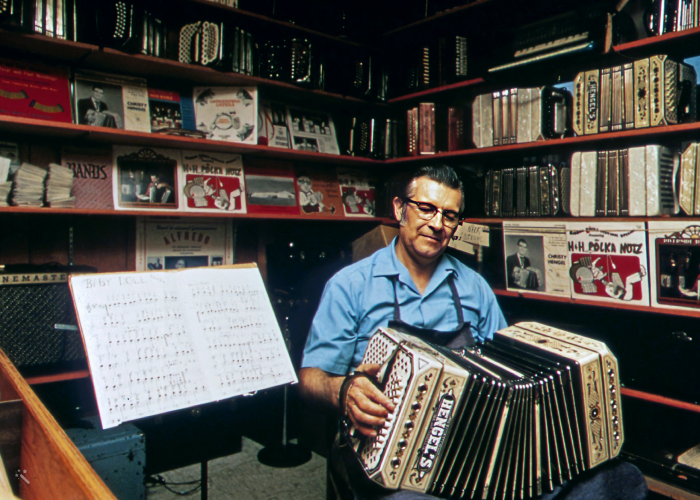
Polka is a type of dance and music that originated in the mid-19th century in the regions of Bohemia, Moravia, and Silesia, which are now part of the Czech Republic, Poland, and Germany. The word “polka” comes from the Czech word “půlka,” which means “half-step,” referring to the dance’s characteristic quick hop.
The Characteristics of Polka
Dancers typically perform the polka in pairs, spinning and twirling around the dance floor to the fast-paced rhythms of the music, making it a lively dance. The dance steps involve quick footwork, with dancers taking small, quick steps and occasionally hopping on one foot.
Polka music is typically played by a band that includes accordions, clarinets, trumpets, and other brass and wind instruments, as well as drums and other percussion instruments. The music’s fast and upbeat tempo creates a distinctive rhythm by alternating strong and weak beats.
Polka in the 21st Century
Over the years, the polka has become popular in many parts of the world. There are now many different variations of the dance and music that have evolved in different regions. In the United States, for example, the polka has become particularly popular among the large Polish and Czech communities in states such as Wisconsin, Minnesota, and Texas.
Today, polka remains a popular dance and music style that is enjoyed by people of all ages and backgrounds. Whether you are a seasoned polka dancer or simply enjoy listening to the lively rhythms of polka music, this vibrant and energetic style is sure to get your toes tapping and your heart racing.
Kwaito from South Africa

Kwaito is a genre of music that originated in South Africa in the early 1990s. It is a blend of house music and African rhythms, with influences from traditional South African music and hip hop. Kwaito is characterized by its slow tempo, repetitive beats, and catchy melodies. People often sing it in isiZulu, isiXhosa, or Sesotho, three of South Africa’s official languages.
The Origins of Kwaito
The term “kwaito” comes from the Afrikaans word “kwaai,” which means angry or fierce. It was originally used to describe the aggressive behavior of young people in the townships of South Africa during the apartheid era. However, kwaito music is far from aggressive. It is a celebration of the post-apartheid era and the new freedoms that came with it.
Kwaito became popular in the mid-1990s, with the release of the compilation album “Kwaito: South African Hip Hop and House Music.” The album featured tracks from artists like Mdu, Mandoza, and Arthur Mafokate, who became some of the most prominent figures in the kwaito scene. The music quickly spread across South Africa and became the soundtrack of the country’s youth culture.
Kwaito in the 21st Century
Kwaito music continues to be popular in South Africa, with new artists and tracks emerging every year. It has also gained international recognition, with kwaito-influenced tracks appearing on albums by artists like Beyoncé and Kendrick Lamar. Kwaito music is a testament to the resilience and creativity of South Africa’s youth culture, and a celebration of the country’s vibrant musical heritage.
Trot from Korea

Trot is a popular genre of music in Korea that originated in the early 20th century.
The Origins of Trot
We can trace back the origins of trot music to the early 1900s when Korea was under Japanese rule. At the time, many Koreans were exposed to Western music, which began to influence the local music scene. Trot music was born out of this fusion of Korean and Western musical styles.
After Korea gained independence from Japan in 1945, trot music began to evolve and take on a more distinctly Korean identity. The lyrics of the songs began to focus more on themes of love, family, and social issues, reflecting the changing values of Korean society.
In the 1960s and 70s, trot music experienced a golden age of popularity. Many people still widely know and love the songs from this era as they have become classics. Trot music also played an important role in the development of the Korean entertainment industry, as many of the early stars of Korean pop music got their start as trot singers.
The Characteristics of Trot
Its upbeat rhythm and catchy melodies, often accompanied by traditional Korean instruments such as the gayageum, janggu, and daegeum, are what characterize it. Trot music has undergone many changes over the years, but it has remained an important part of Korean culture and entertainment.
Trot music declined in popularity in the 1980s and 90s, as younger generations gravitated towards newer musical styles. However, in recent years, trot music has experienced a revival, with many young singers and musicians embracing the genre and putting their own spin on it.
Mariachi from Mexico
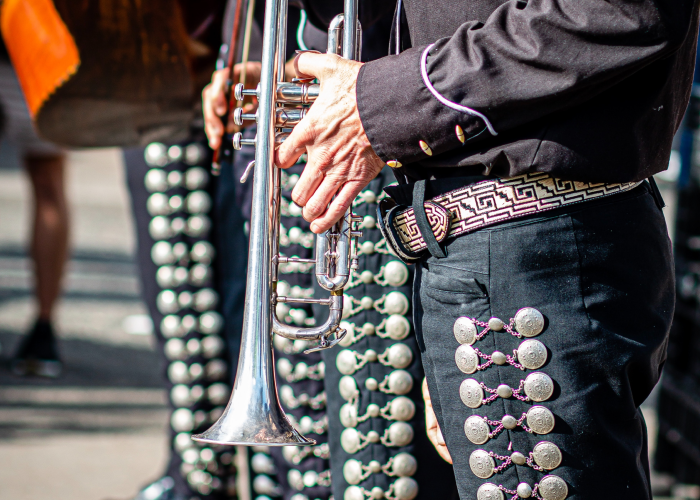
Mariachi is a traditional style of music that originated in Mexico. It is a lively and festive style of music that is often played at weddings, quinceañeras, and other celebrations. The music is played by a group of musicians, known as a mariachi band, who wear traditional charro suits.
The Characteristics of Mariachi
Mariachi music is characterized by the use of a variety of instruments, including the guitar, trumpet, violin, and sometimes the harp. The guitar is the main instrument in the group, providing the rhythmic foundation for the music. The trumpet is used for melodies and solos, while the violin provides additional melody and harmony. The harp, when used, adds a unique flavor to the music.
One of the most iconic aspects of mariachi music is the use of the vihuela, a small, high-pitched guitar that is used to add a unique rhythm to the music. The guitarrón, a large bass guitar, is also used to provide a deep, rhythmic sound that anchors the music.
The lyrics of mariachi music often deal with love, romance, and other aspects of life in Mexico. The songs are often sentimental, but can also be humorous or satirical. The vocal style of mariachi singing is characterized by the use of falsetto, vibrato, and other techniques that add emotional depth to the music.
Modern Mariachi
People around the world have popularized mariachi music, often associating it with Mexican culture. In addition to traditional mariachi music, there are also many modern versions of the style that incorporate elements of other genres, such as rock and roll or jazz.
If you ever have the opportunity to see a mariachi band perform live, it is an experience not to be missed. The energy and passion of the music, combined with the colorful costumes and traditional instruments, make for a truly unforgettable experience. Whether you are a fan of traditional Mexican music or simply love music that is full of life and soul, mariachi is sure to delight and inspire.
Carnatic Music from India
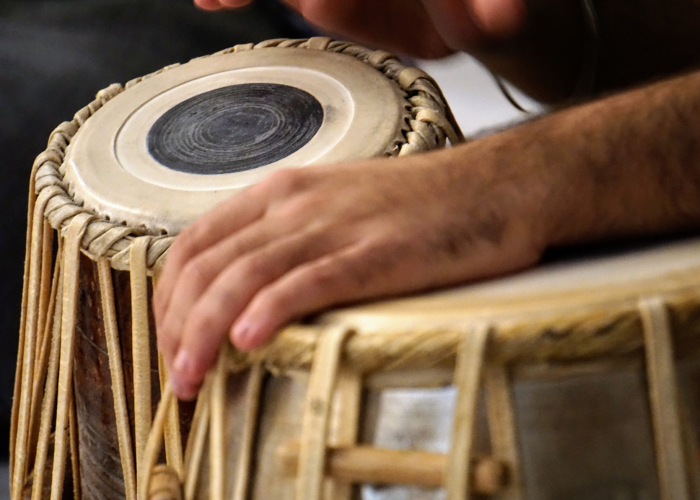
Carnatic music is a traditional style of music that originated in southern India. It is a form of classical Indian music that has a rich history and a deep cultural significance.
The Origins of Carnatic Music
Carnatic music has its roots in the ancient Hindu scriptures, particularly the Vedas, which were written over 3,000 years ago. People originally performed the music in temples as part of religious ceremonies. It was seen as a means of expressing devotion to the gods.
Over time, the music evolved and people introduced new instruments and singing styles, making it more complex. Today, Carnatic music is performed both in temples and concert halls. It is enjoyed by people from all walks of life.
The Characteristics of Carnatic Music
One of the key characteristics of Carnatic music is its emphasis on melody, or raga. A raga is a musical mode or scale that is used as the basis for a performance. There are hundreds of ragas in Carnatic music, each with its own unique character and mood.
Another important aspect of Carnatic music is its use of rhythm, or tala. Talas are rhythmic cycles that are used to structure a performance. There are many different talas in Carnatic music, each with its own unique pattern and complexity.
Fado from Portugal

Fado is a traditional Portuguese music genre that has been around for over two centuries. It is a melancholic and soulful form of music that often speaks of love, loss, and longing. UNESCO has recognized the genre as an Intangible Cultural Heritage of Humanity.
The Characteristics of Fado Music
Fado is typically performed by a singer, accompanied by a classical guitar and a Portuguese guitar. The Portuguese guitar, known as the “viola,” has twelve strings and a unique tuning that gives it a distinct sound. The classical guitar, on the other hand, provides a rhythmic and harmonic foundation for the singer.
The Origins of Fado Music
We can trace the origins of Fado back to the early 19th century in the city of Lisbon, where the lower classes sang it in taverns and brothels. Over time, the genre became more refined and gained popularity among the middle and upper classes, with many famous Fado singers emerging in the mid-20th century.
One of the most famous Fado singers of all time was Amalia Rodrigues. Rodrigues popularized the genre internationally in the 1950s and 1960s. Her powerful voice and emotional performances captivated audiences around the world, and she became a cultural icon in Portugal.
Fado lyrics often express saudade, a Portuguese term that describes a feeling of longing or nostalgia for something lost or unattainable. The songs are typically slow and mournful, with the singer conveying a deep sense of emotion and longing through their voice.
Fado has continued to evolve over the years, with contemporary artists infusing the genre with new elements and styles. Today, Fado remains an integral part of Portuguese culture, with regular performances in bars and restaurants throughout Lisbon and other parts of the country.
Overall, Fado is a beautiful and moving form of music that has captured the hearts of people around the world. Its unique sound and emotional lyrics continue to inspire and touch the hearts of listeners everywhere.
If you liked this blog post, you can read more of our articles here.
